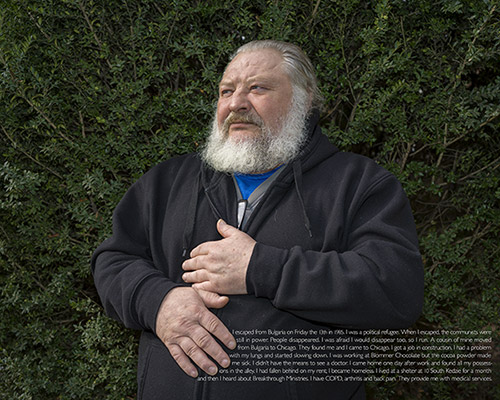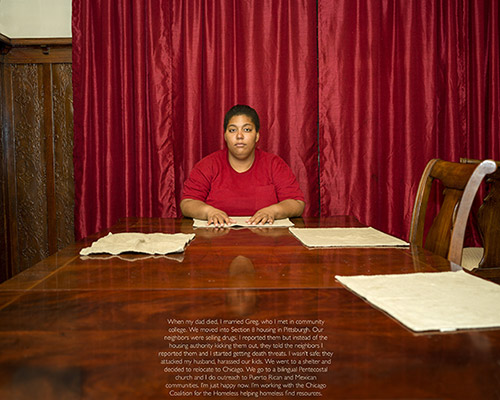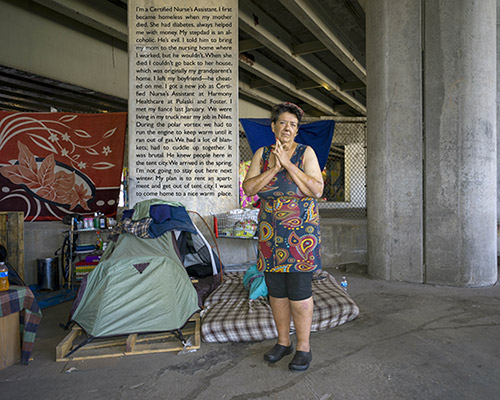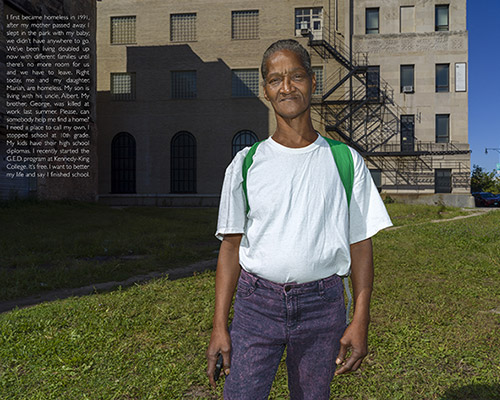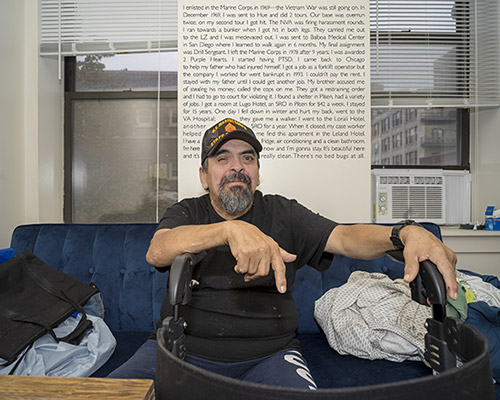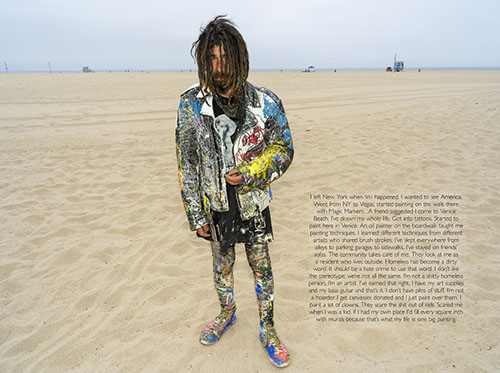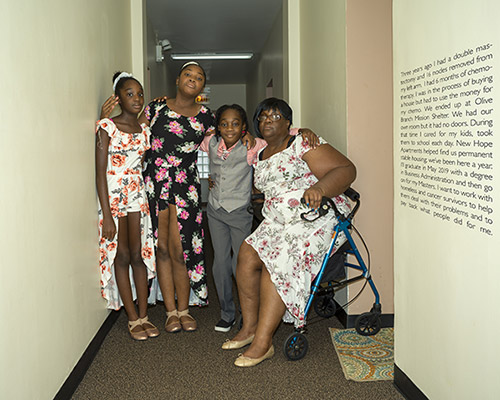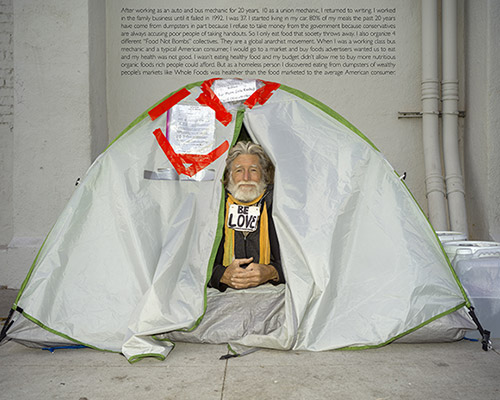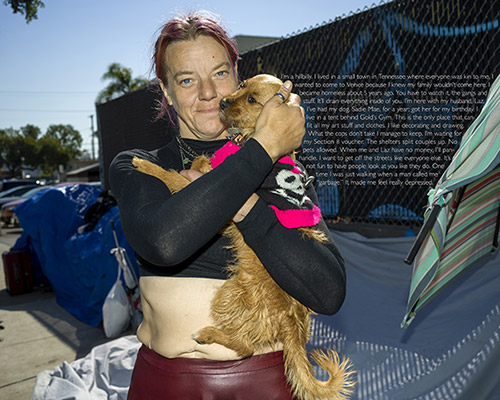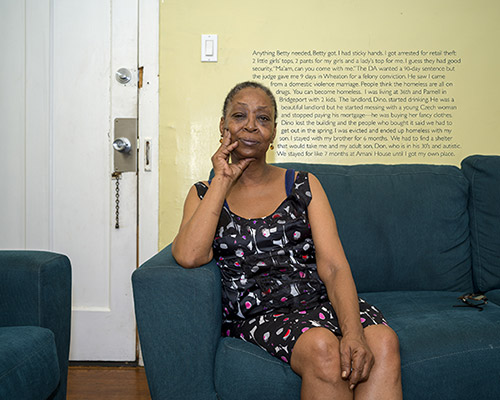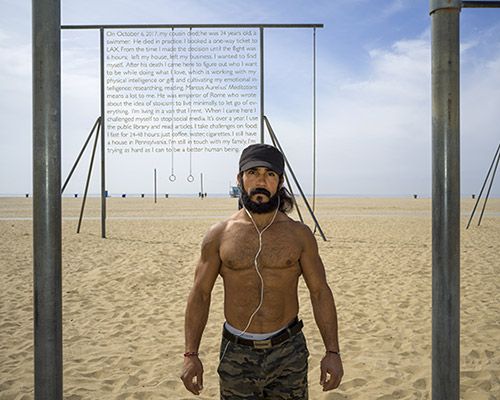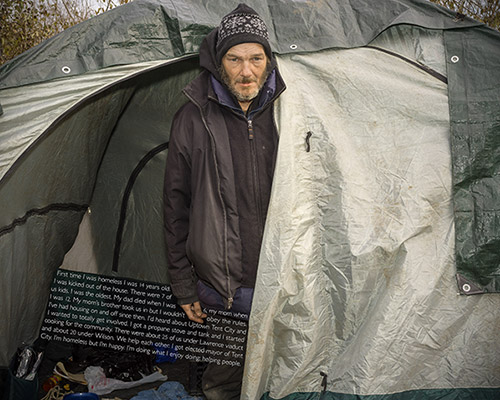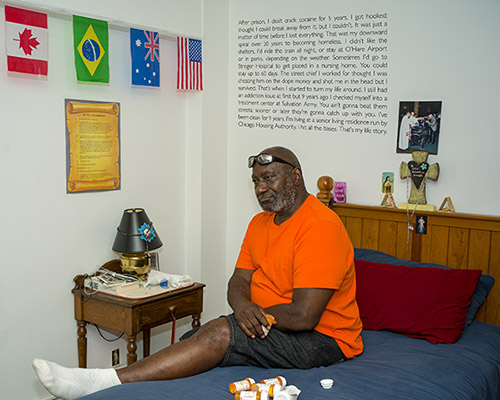Faces of Homelessness
As a photographer, much of my work deals with individuals who have experienced trauma in their lives. I have engaged in long-term portrait series of Holocaust survivors (Written in Memory: Portraits of the Holocaust); American and Vietnamese War Veterans (Inconvenient Stories & From All Sides); and more recently, Pigeon Hill: Then & Now, which pairs portraits I made of people residing in Bloomington’s housing projects between 1987-1991 with portraits of the same folks made between 2011-2016. In all three series I interview the individuals and include their own words with the portraits. This strategy allows audiences to directly connect faces with stories.
Homelessness is a worldwide problem. Living in downtown Chicago, I am confronted with it every day as I go about my daily life. I see so many different faces, each with a unique and compelling story about how they wound up on the streets requesting money from strangers. Our society is moving in the direction of shredding the social safety net, which will make the lives of our most vulnerable fellow-citizens that much harder.
I know I can just wander around the streets and photograph, but given the sensitive nature of this subject, I’ve decided it’s best to work with non-profit organizations that deal with homelessness every day. To this end, I’ve been working with the Chicago Coalition for the Homeless, which has helped me identify individuals to photograph and interview. I’ve learned from CCH and other organizations that homelessness takes many more forms than just living on the streets and that many other factors besides mental illness and drug/alcohol addiction are causes for this problem.
People live doubled up with friends or family (it is estimated that ~18,000 kids in Chicago Public Schools are homeless); in short or long-term shelters; in hospitals or SRO’s (Single Room Occupancy hotels). There are homeless veterans; individuals and families who were evicted when their residences were foreclosed on; people who had sudden and serious medical expenses that insurance didn’t cover, wiping out their life savings. Job loss, divorce, death of a spouse, domestic violence, lack of affordable housing all drive homelessness. There are working poor who live in tents or their vehicles because housing near their workplace is unaffordable. It is essential that I cover as wide a range of individuals as possible in order to tell a more accurate story.
Along these lines, I’ve begun expanding to include homelessness in Los Angeles as representative of some of the unique issues facing the homeless on the west coast. To that end I’ve been working with Safe Place for Youth and Venice Community Housing to help me identify individuals. I’ve also begun to explore the issue of rural homelessness, which is, yet again, somewhat different than what we see in large urban areas.
My hope is that my photo/text images can contribute to the public conversation about the causes and possible solutions to some of the difficult issues surrounding homelessness and to gain more understanding of this large but rather vulnerable community.
